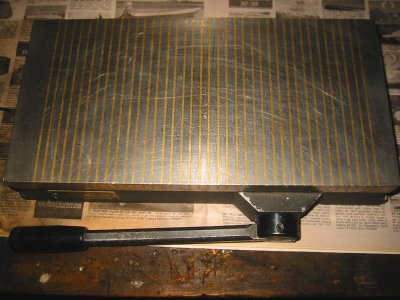- Joined
- Jul 7, 2012
- Messages
- 641
Chuck in question is the flat permanent magnet type as commonly used on a surface grinder.
Q1: In absence of said surface grinder, can the chuck face be safely trued with a face/shell mill cutter?
Q2: Segmented (aluminum/steel or brass/steel) 'V' blocks and spacers are usually used for work-piece location.
Is this (a): to prevent the work-piece from becoming permanently magnetized, or (b): to protect the magnetic chuck, or (c): some other reason?
Thanks,
M
Q1: In absence of said surface grinder, can the chuck face be safely trued with a face/shell mill cutter?
Q2: Segmented (aluminum/steel or brass/steel) 'V' blocks and spacers are usually used for work-piece location.
Is this (a): to prevent the work-piece from becoming permanently magnetized, or (b): to protect the magnetic chuck, or (c): some other reason?
Thanks,
M


